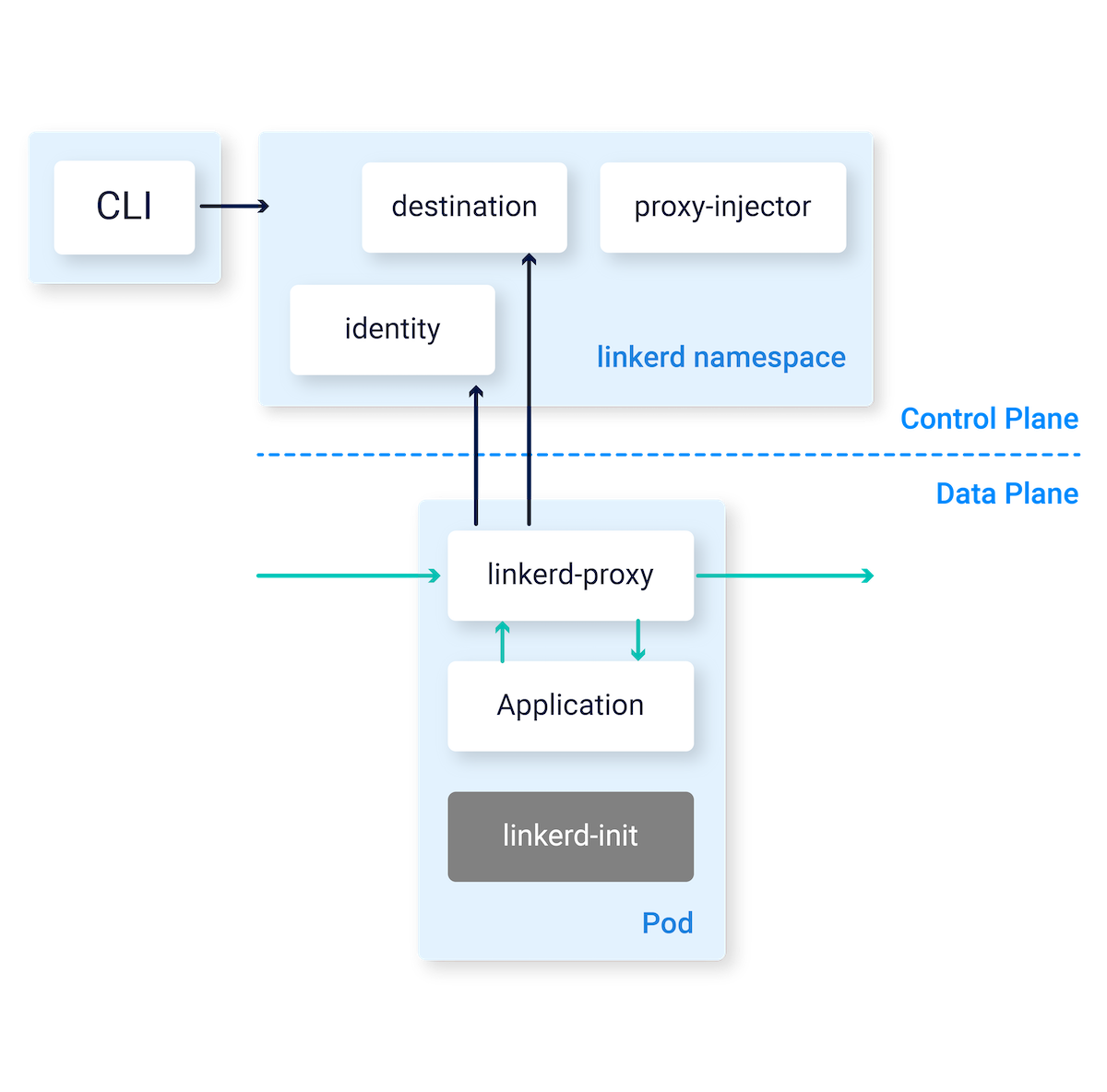Architecture
At a high level, Linkerd consists of a control plane and a data plane.
The control plane is a set of services that and provide control over Linkerd as a whole.
The data plane consists of transparent micro-proxies that run “next” to each service instance, as sidecar containers in the pods. These proxies automatically handle all TCP traffic to and from the service, and communicate with the control plane for configuration.
Linkerd also provides a CLI that can be used to interact with the control and data planes.

CLI
The Linkerd CLI is typically run outside of the cluster (e.g. on your local machine) and is used to interact with the Linkerd.
Control plane
The Linkerd control plane is a set of services that run in a dedicated
Kubernetes namespace (linkerd by default). The control plane has several
components, enumerated below.
The destination service
The destination service is used by the data plane proxies to determine various aspects of their behavior. It is used to fetch service discovery information (i.e. where to send a particular request and the TLS identity expected on the other end); to fetch policy information about which types of requests are allowed; to fetch service profile information used to inform per-route metrics, retries, and timeouts; and more.
The identity service
The identity service acts as a TLS Certificate Authority that accepts CSRs from proxies and returns signed certificates. These certificates are issued at proxy initialization time and are used for proxy-to-proxy connections to implement mTLS.
The proxy injector
The proxy injector is a Kubernetes admission
controller
that receives a webhook request every time a pod is created. This injector
inspects resources for a Linkerd-specific annotation (linkerd.io/inject: enabled). When that annotation exists, the injector mutates the pod’s
specification and adds the proxy-init and linkerd-proxy containers to the
pod, along with the relevant start-time configuration.
Data plane
The Linkerd data plane comprises ultralight micro-proxies which are deployed as sidecar containers inside application pods. These proxies transparently intercept TCP connections to and from each pod, thanks to iptables rules put in place by the linkerd-init (or, alternatively, by Linkerd’s CNI plugin).
Proxy
The Linkerd2-proxy is an ultralight, transparent micro-proxy written in Rust. Linkerd2-proxy is designed specifically for the service mesh use case and is not designed as a general-purpose proxy.
The proxy’s features include:
- Transparent, zero-config proxying for HTTP, HTTP/2, and arbitrary TCP protocols.
- Automatic Prometheus metrics export for HTTP and TCP traffic.
- Transparent, zero-config WebSocket proxying.
- Automatic, latency-aware, layer-7 load balancing.
- Automatic layer-4 load balancing for non-HTTP traffic.
- Automatic TLS.
- An on-demand diagnostic tap API.
- And lots more.
The proxy supports service discovery via DNS and the destination gRPC API.
You can read more about these micro-proxies here:
- Why Linkerd doesn’t use Envoy
- Under the hood of Linkerd’s state-of-the-art Rust proxy, Linkerd2-proxy
Linkerd init container
The linkerd-init container is added to each meshed pod as a Kubernetes init
container
that runs before any other containers are started. It uses
iptables to route all TCP traffic to and from the pod through
the proxy. Linkerd’s init container can be run in different
modes which determine what iptables variant is used.

